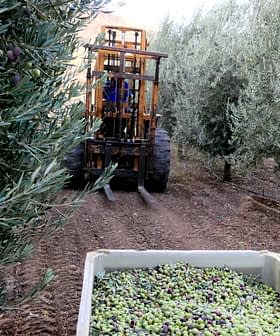Olive oil prices in the United States reportedly have risen by 30 percent due to steep wage increases for – and a shortage of – truck drivers.
This shocking statistic was recently revealed in the New York Post by Christopher Pappas, CEO of Chefs’ Warehouse, a supplier for food businesses across the country.
The majority of the increase is absorbed by the consumers due to escalating shipping costs and supply costs.
Before the onset of the Covid-19 pandemic, there was already a shortage of drivers, and around 88,300 trucker jobs were shed in April 2020 during the early stages of the pandemic.
However, a sharp rise in online shopping resulting from the coronavirus outbreak drove up the demand for truck drivers, causing a concerning shortage of these workers. In April this year, there were 63,000 vacant positions for truckers.
According to Business Insider, the increased demand resulted in a sharp pay hike for drivers, incentivizing them to spend less time on the road and more time at home. This compounded the trucker shortage.
In addition to being faced with paying recent wage increases, food distributors had to start paying intermediaries to recruit drivers, pushing their expenses up even more. This has left both consumers and producers left to foot the bill.
“The majority of the increase is absorbed by the consumers due to escalating shipping costs and supply costs,” Cathy Bernell, the Texas Association of Olive Oil president, told Olive Oil Times. “Retail and wholesale purchasers are incurring these additional costs as well, but they are ultimately passed onto the consumer.”
“An informal poll of Texas olive producers shows that the producers do not add a surcharge to their shipping costs, but charge the consumer the same rate that the shipping companies are charging, so the feedback has been one of understanding albeit frustration,” she added.
See Also:Olive Oil Business News“From an industry perspective, we will continue to gauge the impact of these price increases along with feedback and input from our Texas olive growers,” Bernell continued.
However, according to Bernell, the price hike has not slowed down the sales of olive oil in Texas.
“Given the current circumstances of the changing food markets and consumer purchasing preferences, Texas olive oil has remained a dynamic and sought-after food,” she said.
Joseph R. Profaci, the executive director of the North American Olive Oil Association (NAOOA), told Olive Oil Times that many NAOOA members have expressed concern about transportation costs.
However, unlike Bernell, he said feedback from his association’s members revealed producers and distributors were left to cover the price hike.
“My members report that according to national syndicated data for the last 24 weeks, consumer prices for olive oils are actually lower by about four percent, representing in part increased levels of promotional activity over last year,” Profaci said.
“So despite all these additional costs, olive oil producers and distributors have been constrained to absorb most if not all of the increased costs,” he added.
Profaci said one reason for this is that many retailers “won’t accept increases greater than 10 percent under these conditions for fear of being charged with price gouging.”
Profaci added that a more significant concern than increased transportation costs for NAOOA members was “the market conditions of supply and demand,” which have led to “increases of 30 percent or more in the costs of olive oil raw materials.”
He said the domestic and global demand for olive oil spiked last year with consumers cooking at home “at levels not seen in decades, and their grocery choices were strongly influenced by an interest in health.”
However, he added that global olive oil production has been “relatively flat.”
“While consumption has dropped nine percent compared to the same period last year at the height of the pandemic, it is still up double digits over the same period the year before that,” Profaci said.








